Designed as an above-ground lift station, the Sanicubic series is ideal for environments where gravity drainage is not an option, providing an efficient and reliable way to pump wastewater to the main sewage line. The Sanicubic range from Saniflo is a robust and versatile solution for handling wastewater in residential, commercial, and industrial settings. The Read more
residential
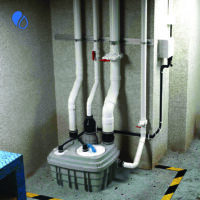
Designed as an above-ground lift station, the Sanicubic series is ideal for environments where gravity drainage is not an option, providing an efficient and reliable way to pump wastewater to the main sewage line. The Sanicubic range from Saniflo is a robust and versatile solution for handling wastewater in residential, commercial, and industrial settings. The whole range is under limited warranty for 4 years and UPC and CSA approved for nationwide compliance.

Sanicubic 1VX – (IP68) Simplex Vortex lift station – 220-240V – 1.5h – For multiple plumbing fixtures Handles 2″ Solids (Residential / Commercial / Industrial).
Performance and Models
The Sanicubic range includes two primary models, each tailored to different needs. The Sanicubic 1 is a single-motor unit, perfect for residential applications or smaller commercial spaces. It is capable of pumping waste 36 feet up (including solids up to 2”) from multiple fixtures, including toilets, sinks, showers, and washing machines. The pump can handle up to 137 GPM (VX model), making it a powerful yet compact solution for homes and small businesses.
For larger or more demanding applications, the Sanicubic 2 is an excellent choice. This model features a dual-motor system that ensures continuous operation, even if one motor fails. The Sanicubic 2 can pump up to 250 GPM (VX model) and is suitable for commercial properties such as restaurants, hotels, and public buildings where high-volume wastewater (including solids up to 2”) management is crucial.
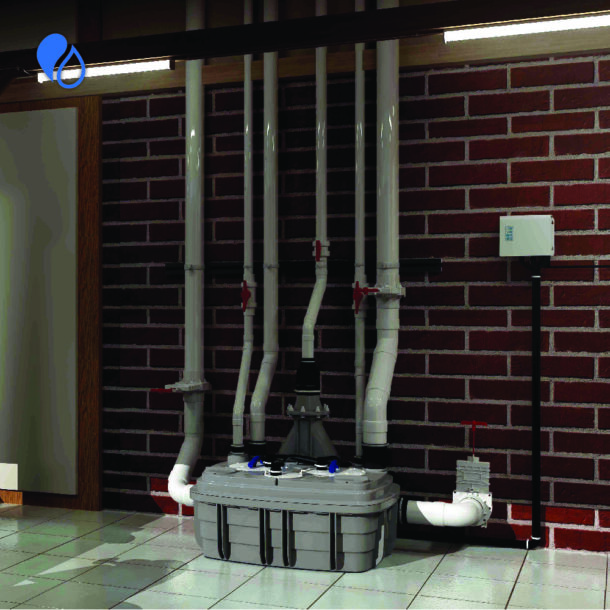
Sanicubic 2VX – (IP68) Duplex Vortex lift station – 220-240V – 2×1.5hp – or multiple plumbing fixtures Handles 2″ Solids (Residential / Commercial / Industrial).
Application and Integration
Each model in the Sanicubic range is engineered as an above-ground lift station, making installation straightforward and minimizing disruption to the property. This feature is particularly beneficial in basements or areas where traditional gravity-fed below ground systems would be impractical or impossible. The compact design allows the unit to be installed discreetly, and the robust construction ensures long-term durability even in the most challenging environments. The maintenance is also very easy with quick access to the main components, coupled to an external control panel and an alarm to ensure reliable operation.
The Sanicubic range offers a reliable, high-performance solution for wastewater management, with each model providing the necessary power and capacity to meet specific needs. As an above-ground lift station, it stands out as a versatile and essential tool for all applications.

WaterFurnace International, a leading innovator in geothermal and water source heating and cooling solutions, broke ground on a significant expansion of its Fort Wayne, Indiana headquarters on May 30th. The 173,000 square foot building expansion will more than double its current size, offering more flexibility to increase operating efficiencies and production capabilities to meet growing Read more
WaterFurnace International, a leading innovator in geothermal and water source heating and cooling solutions, broke ground on a significant expansion of its Fort Wayne, Indiana headquarters on May 30th. The 173,000 square foot building expansion will more than double its current size, offering more flexibility to increase operating efficiencies and production capabilities to meet growing customer demand. It will also be equipped with multiple features that allow for future state-of-the-art enhancements as the company continues to grow.
Despite the considerable increase in space, the entire facility will continue to be 100% heated and cooled by WaterFurnace geothermal heat pumps that draw from the renewable energy of its existing pond. This commitment parallels the societal shift away from fossil fuels towards more sustainable energy solutions and underscores WaterFurnace’s dedication to environmentally friendly practices.
“This expansion reflects our commitment to innovation, sustainability, and the community. We’re investing in this 14-million-dollar project because we’re committed to growing as a renewable technology leader from right here in Fort Wayne,” said

John Thomas, CEO with 30 year WaterFurnace employees (from left to right) Bob Brown, Tonsha Woods, Elaine Shearer, Curt Morton, Julie Mllage, Suzanne Cross, Tom Kinder, Chris Mann, Gregg Tapp, and Luke Goings.
CEO of WaterFurnace International, “With 320 dedicated employees, we are poised to lead the industry with our advanced products and exceptional service as the demand for sustainable energy solutions continues to rise.”
WaterFurnace’s expansion comes on the heels of two record-breaking years, driven by a growing demand for renewable energy technologies and the currently available 30% federal tax credit for geothermal systems. The company has built a reputation as an industry leader, known for its exceptional production efficiency, with unmatched lead times of just 3-5 days from order to shipment.

Introducing new press x ¼” compression connections for its existing Webstone T-Valve products. These lead-free, dezincification-resistant brass valves feature a ball valve with an integrated tee fitting. Ideal for branch or device connections in tight locations, this new size is perfect for installing humidifiers and ice makers. With press connection options of ½” or ¾” Read more
Introducing new press x ¼” compression connections for its existing Webstone T-Valve products. These lead-free, dezincification-resistant brass valves feature a ball valve with an integrated tee fitting. Ideal for branch or device connections in tight locations, this new size is perfect for installing humidifiers and ice makers. With press connection options of ½” or ¾”, installation results are always quick, clean, and consistent.
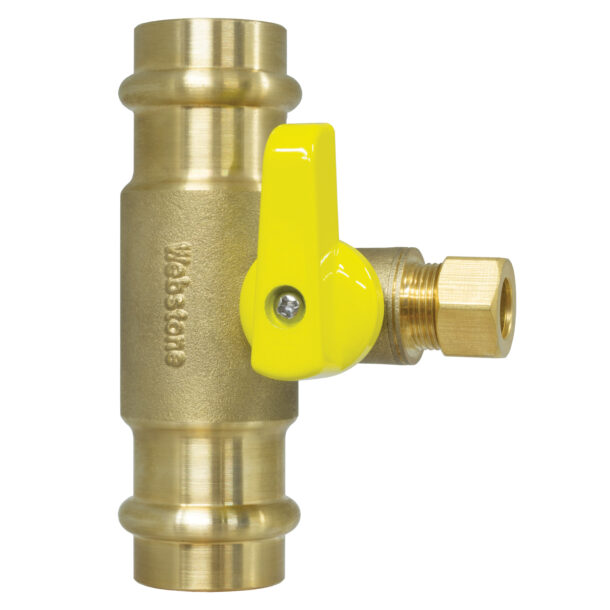
“This line expansion is a direct response to our customers’ feedback,” said Lisa Lyon, General Manager of Webstone, a brand of NIBCO. “After introducing the original set of compression T-Valves, the case for additional models in the press connection was made by installers who prefer the convenience of this connection method in the field.”

Manufacturing and transportation projects drive gains Total construction starts rose 6% in August to a seasonally adjusted annual rate of $1.3 trillion, according to Dodge Construction Network. Nonresidential starts rose 40% thanks to a large pickup in manufacturing and transportation buildings. Residential and nonbuilding starts fell 1% and 14%, respectively. Year-to-date through August 2023, total Read more
Manufacturing and transportation projects drive gains
Total construction starts rose 6% in August to a seasonally adjusted annual rate of $1.3 trillion, according to Dodge Construction Network. Nonresidential starts rose 40% thanks to a large pickup in manufacturing and transportation buildings. Residential and nonbuilding starts fell 1% and 14%, respectively.
Year-to-date through August 2023, total construction starts were 5% below that of 2022. Residential and nonresidential starts were down 18% and 9%, respectively; however, nonbuilding starts were up 22%. For the 12 months ending August 2023, total construction starts were unchanged. Nonbuilding starts were 20% higher, and nonresidential building starts gained 6%. Conversely, on a 12-month rolling basis, residential starts posted a 17% decline overall.

“Despite the August gain, the construction sector is running uphill,” said Richard Branch, chief economist for Dodge Construction Network. “Fear of an imminent recession seems to have abated, which should provide a boost of confidence to the sector. However, higher interest rates, labor shortages and significantly tighter lending standards will weigh down starts in the final quarter of the year. This will persist for the foreseeable future, lasting until interest rates start to move lower.”
Nonbuilding
Nonbuilding construction starts lost ground in August, falling 14% to a seasonally adjusted annual rate of $380 billion. The decline follows a strong July which saw the start of a $12 billion LNG project. Nonbuilding starts increased 12% in August when excluding the utility/gas plant category, which fell 45% during the month. Miscellaneous nonbuilding starts shot 39% higher, and highway and bridge starts gained 19%. However, environmental public works starts shed 1%.
Year-to-date through August, nonbuilding starts gained 22%. Utility/gas plants rose 40%, and miscellaneous nonbuilding starts were up 33%. Highway and bridge starts gained 13%, and environmental public works rose 17%.
For the 12 months ending August 2023, total nonbuilding starts were 20% higher than that of August 2022. Utility/gas plant and miscellaneous nonbuilding starts rose 23% and 30%, respectively. Highway and bridge starts were up 17%, and environmental public works rose 18% on a 12-month rolling sum basis.
The largest nonbuilding projects to break ground in August were the $3.5 billion TransWest Transmission Project spanning Wyoming, Colorado, Utah and Nevada, the $2.9 billion Mid-Barataria Sediment Diversion projects in Port Sulphur, Louisiana, and the $1.5 billion New England Clean Energy Connect Power Line in Maine.
Nonresidential
Nonresidential building starts gained 40% in August to a seasonally adjusted annual rate of $475 billion, largely due to a surge in manufacturing activity. Nonresidential building starts would have gained 24% when excluding these large manufacturing projects. Commercial starts rose 8% in August led by gains in parking structures and hotels, and institutional starts rose 35% with all sectors but dormitories increasing. Manufacturing starts rose 285% from July to August, fueled by two large projects. On a year-to-date basis through August, total nonresidential starts were 9% lower than that of 2022. Institutional starts gained 3%, while commercial and manufacturing starts fell 8% and 32%, respectively.
For the 12 months ending August 2023, total nonresidential building starts were 6% higher than that ending August 2022. Manufacturing starts were 2% higher. Institutional starts improved 8%, and commercial starts gained 6%.
The largest nonresidential building projects to break ground in August were the $2.5 billion John Palmour Manufacturing Center for Silicon Carbide in Siler City, North Carolina, the $2 billion VinFast electrical vehicle plant in New Hill, North Carolina, and the $1.4 billion Midfield Satellite Concourse at Los Angeles International Airport in California.
Residential
Residential building starts fell 1% in August to a seasonally adjusted annual rate of $418 billion. Single family starts gained 2%, while multifamily starts lost 5%. On a year-to-date basis through August 2023, total residential starts were down 18%. Single family starts were 21% lower, and multifamily starts were down 12%.
For the 12 months ending in August 2023, residential starts were 17% lower than in 2022. Single family starts were 23% lower, while multifamily starts were down 3% on a rolling 12-month basis.
The largest multifamily structures to break ground in August were the $530 million Hub on Campus mixed-use building in Knoxville, Tennessee, the $425 million 250 Water Street mixed-use tower in New York, New York, and the $340 million Ritz Carlton residences in North Palm Beach, Florida.
Regionally, total construction starts in August rose in the Midwest, South Atlantic and West regions, but fell in the South Central.
Watch Chief Economist Richard Branch discuss August Construction Starts here.
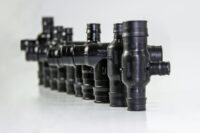
The popularity of PEX in residential and commercial construction has produced an influx of engineered polymer (EP) F1960 expansion fittings claiming to be “just the same as Uponor ProPEX®”. However, these lower-quality F1960 fittings are putting systems and contractors at significant risk for leaks or poor performance. Uponor ProPEX fittings are certified by a third-party Read more
The popularity of PEX in residential and commercial construction has produced an influx of engineered polymer (EP) F1960 expansion fittings claiming to be “just the same as Uponor ProPEX®”. However, these lower-quality F1960 fittings are putting systems and contractors at significant risk for leaks or poor performance.
Uponor ProPEX fittings are certified by a third-party agency, NSF International, to prove the product is designed and manufactured to the ASTM F1960 standard. In addition, ProPEX fittings also include additional internal quality testing that extends beyond ASTM F1960 standard requirements to provide a higher-quality product.
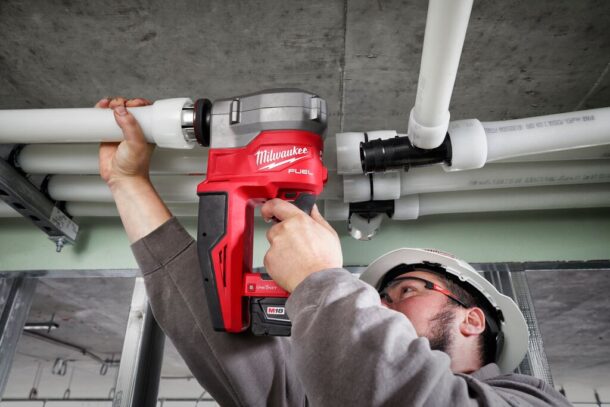
Some suppliers claim their fittings are compliant to F1960, which means, in their opinion, they meet the standard. However, there is no third-party agency to confirm that compliance. This confusion between certification and compliance is resulting in PEX piping installations with lower-quality connections that are putting systems at risk for failure and jeopardizing installers’ reputations.
Uponor has performed a random sampling of these lower-quality F1960 EP fittings and found them to have a reduced internal diameter — up to 50% in some instances. Additionally, Uponor has received claims for failed connections that, after investigation, were found to be different suppliers’ low-quality F1960 fittings.
Many generic F1960 expansion fittings have a thinner sealing barb and weaker tube stops compared to ProPEX fittings. Those differences can result in leaks that cost time and money to repair — and also damage a contractor’s reputation.
It is important to be vigilant when ordering and purchasing F1960 fittings. Ensure you are getting the superior quality of ProPEX that comes with a 25-year transferable limited warranty when used as a system with Uponor PEX-a pipe and ProPEX rings.
To learn more about the differences in ProPEX and how it can impact your business, visit uponor.com/propex.
